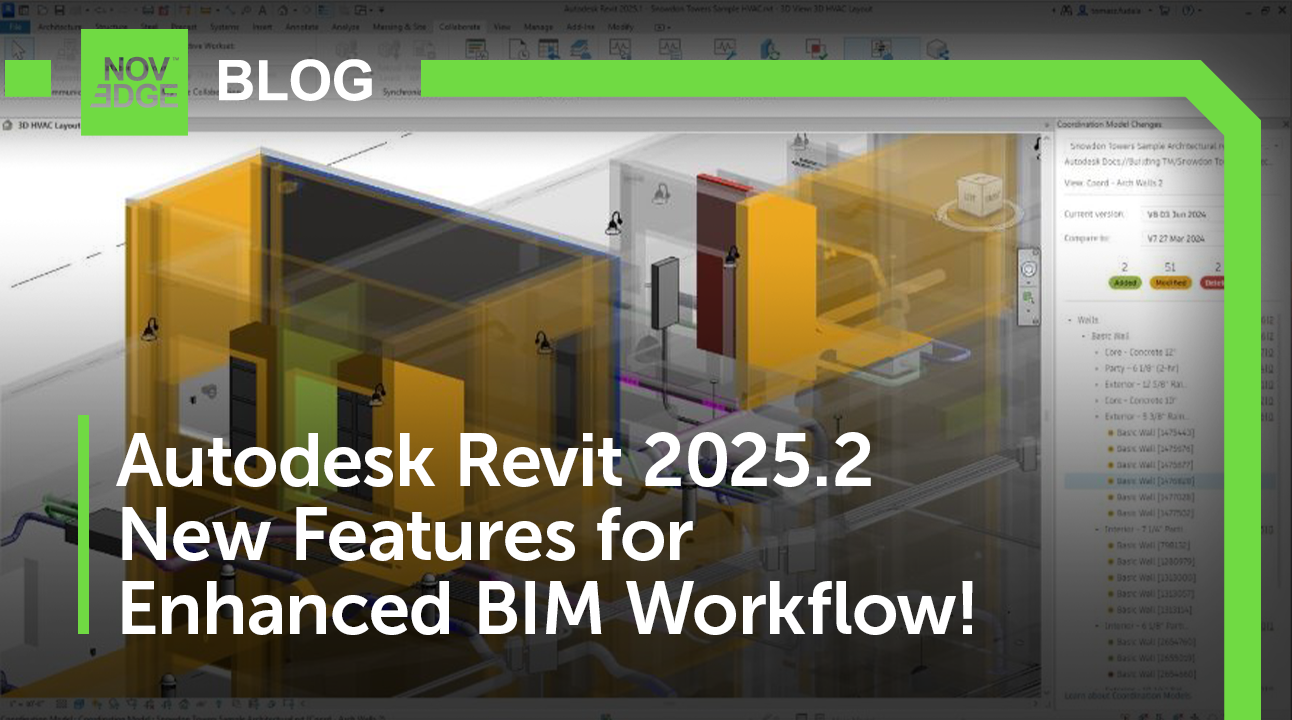Your Cart is Empty
Customer Testimonials
-
"Great customer service. The folks at Novedge were super helpful in navigating a somewhat complicated order including software upgrades and serial numbers in various stages of inactivity. They were friendly and helpful throughout the process.."
Ruben Ruckmark
"Quick & very helpful. We have been using Novedge for years and are very happy with their quick service when we need to make a purchase and excellent support resolving any issues."
Will Woodson
"Scott is the best. He reminds me about subscriptions dates, guides me in the correct direction for updates. He always responds promptly to me. He is literally the reason I continue to work with Novedge and will do so in the future."
Edward Mchugh
"Calvin Lok is “the man”. After my purchase of Sketchup 2021, he called me and provided step-by-step instructions to ease me through difficulties I was having with the setup of my new software."
Mike Borzage
An Interview with David Opsahl, CEO of Actify (Spinfire)
June 17, 2007 6 min read

David Opsahl is the CEO of Actify, the company that makes the SpinFire products for CAD data visualization. The CAD data visualization market is going through some very important changes with acquisitions (Cimmetry and Agile) and new products (Acrobat 3D) available to end users. Actify has been in this market for several years and has witnessed this evolution. In order to get a qualified opinion on the implications of these changes I walked the few San Francisco blocks that separate Novedge from Actify and interviewed David. Here is the interview.
David, can you tell us a bit about yourself and your company?
Sure. I’ve been involved with manufacturing software since 1977, first as a user at companies like Boeing and Bechtel, and then on the vendor side at companies such as Computervision [acquired by PTC]. Tecnomatix [acquired by UGS, acquired by Siemens], Division [acquired by PTC], PTC, Aspect Development, Adaptive Media, and Cardonet. I’ve done a variety of tasks at each of these places, from software engineering, applications engineering, sales and sales management, general manager, and business development. I became involved with Actify in 2004 when I was asked to join them as vice president of business development.
Actify has been in the business of making CAD data visualization software — or DDC (Digital Design Communication) as you like to call it — for many years. What are the main changes you have seen in this market?
view, measure, markup isn’t the business problem, merely one tool needed to solve the business problem
In some respects, I’ve not seen much in the way of change. From a pure “visualization” perspective, things in this market are more or less like they’ve always been in this market, and we still struggle with many of the challenges companies in this space did ten years ago – that is, of course, if you define the problem as “view, measure, and markup” of 2D and 3D CAD data as I think most people do. Having said that, there are some changes worth mentioning. One is the inclusion of PMI data as part of what we can expose downstream of engineering – that is a huge opportunity for improving communications in the manufacturing industry. Another is the recognition in the market that “view, measure, markup” isn’t the business problem, merely one tool needed to solve the business problem. That leads to a whole different way of looking at the business.
Until recently DDC(Digital Design Communication)was a business of small and medium companies. Now with Adobe and Oracle entering the arena of DDC, what is going to change?
they (Adobe) have the potential to solve the premier roadblock to innovation in this space: the data format problem
Honestly, I don’t think that much will change, at least not quickly. Where Adobe is concerned, they have the potential to solve the premier roadblock to innovation in this space – the data format problem. I can’t think of any other industry where application data so critical to improving business performance is locked away in proprietary formats. And the CAD vendors for the most part like to see it that way, and while I think the days of proprietary formats are numbered, we have a ways to go . With respect to Oracle, I don’t see them having any impact on the market. PLM vendors have tried many times to make visualization a part of their solution, and it doesn’t seem to help them sell more software. Oracle bought Adaptive Media’s visualization software years ago, and if you aren’t using Oracle PLM you never see it. I could be wrong, but I think Oracle bought Agile for Agile and Eigner [acquired by Agile], not for Cimmetry – although I think Autovue is a good fit for Oracle’s platform and will become part of their offering. But that only changes the market for Oracle’s products – and the trickle down there, if any, remains to be seen.
I have expressed a few times the opinion that DDC products have a huge unexploited potential. What is blocking products like SpinFire from becoming more popular in the design and manufacturing industry?
get rid of (the format problem), and you’ll see lots of breakout innovation in this space
I’ll go right back to what I said earlier – the format problem. Get rid of that, and you’ll see lots of breakout innovation in this space. Secondly, the unexploited potential I believe has to do with the utilization of data by folks some distance away in terms of skills and experience from engineers – and that tends to drive product development for in our market from a different perspective. If one defines success in this industry by the number of people outside engineering who pay for a capability and then, year after year, renew their commitment to that product financially, I think we tend to lead the market in that area.
Historically companies in the DDC industry considered data translation a different business than data visualization. Each addresses different users and requires different products. Acrobat 3D is changing this unwritten rule. Is Adobe breaking a taboo or making a mistake?
in Acrobat 3D, it isn’t apparent to me how you would export to another CAD format
I don’t know if I agree with your premise that Acrobat 3D is changing this unwritten rule. Clearly they have that ability technologically, but I don’t know if that means they will exploit it. In the current version of Acrobat3D (V8) that I have, it isn’t apparent to me how you would export to another CAD format, which I think is what you are talking about. On top of that, if they solve the format problem, then the need for translators is moot, isn’t it? Although I can’t speak for them, if I were Adobe I would want PRC to be supported by the CAD vendors given a choice.
Some companies are exploring the possibility of bringing the CAD viewer inside the web browser without requiring the installation of plugins thanks to new technologies such as Ajax. What is your opinion on and vision for this new approach?
No question in my mind you will see more product development done in this area, but there are some serious technology challenges in making this work. Not all of them have to do with the parts of the problem Ajax solves. Not to sound repetitive, but to a large degree innovation in this area faces some of the same roadblocks we discussed earlier. For instance, eliminating plug-ins requires extremely efficient code that can be downloaded in real-time or near real-time. In order to do that job in the most efficient matter, the data format must also be highly efficient, and the industry isn’t there – yet. And, there will always be the need to allow people to work “disconnected “, so a world without plug-ins doesn’t necessarily solve the problem.
A few years ago Actify tried to enter the corporate market with a client server solution. For lack of determination the experiment didn’t fully succeed. Have you given up on this new market or do you have other plans?
the Actify vision some years back was very well thought out, but perhaps ahead of its time
The Actify vision some years back was very well thought out, but perhaps ahead of its time, and along the way, I think its evolved somewhat. The original client/server solution was envisaged as something similar to what Outlook and Exchange are today, if taken alone. However, there are a number of needs in a collaboration solution not provided by that model. Today, if one looks at the Office platform, with tools like Sharepoint, Infopath, and so forth, you can see how that vision for Outlook and Exchange has become much richer. Our vision has evolved similarly, but one can easily see how that original model has continued to be the starting point.
Actify is an innovative company, with a tradition of embracing new technologies in their early stages. What technologies do you see out there now that could play a role in you current or future products?
As much as I’d like to answer that question – I won’t, for obvious reasons. What I can tell you is that we have no intention of eliminating our history of technological innovation. To the contrary, I believe fairly soon we’ll have some things to say that will explain just how much we will continue in that tradition.
I would like to thank David Opsahl for the interview today. If you have any questions for David or for Novedge, please leave a comment below and we will be glad to answer.
Franco Folini
Also in NOVEDGE Blog

How the AEC Industry Shifted Towards Essential Sustainable Building Design
August 15, 2024 4 min read
Read More
Unlocking New Realms of Design with Enscape 4.1: Introducing Impact Add-on and Lot More
August 02, 2024 2 min read
Read More
Explore Autodesk Revit 2025.2: New Features and Enhancements for Enhanced BIM Workflows
July 30, 2024 3 min read
Read MoreSubscribe
Sign up to get the latest on sales, new releases and more …


